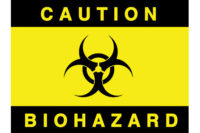In 2024, OSHA has placed a renewed emphasis on mental health, recognizing its importance in overall workplace safety. The new guidelines encourage employers to implement mental health programs, provide resources for employee’s support, and incorporate mental well-being into their health and safety programs and policies.
Workplace stress and poor mental health caused related to critical incident stress can negatively affect workers through job performance, productivity, work engagement and communication, physical capability and daily normal functioning.
What is critical incident stress?
Workers responding to emergency events and or disasters will see and experience events that will strain their ability to function. These events, which include having to witness or experience tragedy, death, serious injuries and threatening situations are called "Critical Incidents." The physical and psychological well-being of those experiencing this stress, as well as their future ability to function through a prolonged response, will depend upon how they manage this stress.
Post Traumatic Stress Disorder differs from critical incident stress by lasting longer than four weeks after the event triggering an emotional, mental or physical response. Most instances of critical incident stress last between two days and four weeks.
The signs and symptoms of critical incident stress can be physical, emotional, cognitive or behavioral. Individuals express stress in different ways and therefore manifest different reactions. Read more about Critical Incident Stress[TA1] on OSHA’s website.
What is occupational PTSD and how does it differ?
PTSD is a mental health condition that can develop after an individual experiences or witnesses a traumatic event. OSHA defines occupational PTSD as trauma associated with negative work conditions, such as long working hours, layoffs, workplace stress and frequency of exposure to negative conditions.
PTSD can affect anyone who has experienced or witnessed a traumatic incident, including those in the workplace. The symptoms of PTSD can be debilitating and may persist for months or even years after a traumatic event has occurred, while critical incident stress typically resolves within two days and four weeks.
Identifying triggers in the workplace
In the workplace, various incidents can trigger PTSD and critical incident stress among employees, leaving lasting emotional scars and impacting their mental well-being.
Workplace accidents, such as machinery malfunctions in warehouses or mishaps on construction sites, have the potential to traumatize employees who may witness or experience such events. Similarly, instances of physical violence, including assaults or armed robberies, can profoundly affect individuals. Self-harm or suicide can also trigger critical incident stress among employees, even if the event was not directly witnessed, the impact to the larger community at any workplace can be significant.
Employees working in areas prone to natural disasters, such as earthquakes, hurricanes or wildfires, may find themselves confronted with catastrophic events while on the job. The trauma of experiencing or witnessing these disasters can contribute to the development of PTSD and critical incident stress.
Beyond acute incidents, prolonged exposure to a hostile or toxic work environment can also contribute to the development of PTSD and critical incident stress among employees. Factors such as bullying, harassment, discrimination or ongoing conflict can create a pervasive sense of fear and insecurity, exacerbating symptoms of trauma over time.
Recognizing signs of PTSD and critical incident stress in employees
Employers should be vigilant in identifying signs of PTSD and critical incident stress among their workforce, including:
- Behavioral changes: Observable shifts in behavior, such as increased irritability, agitation, withdrawal or avoidance of certain tasks or environments, may indicate underlying trauma.
- Mood swings: Employees may exhibit mood swings, ranging from sudden outbursts of anger or sadness to periods of emotional numbness or detachment.
- Cognitive impairments: Difficulties with concentration, memory, decision-making, or problem-solving, impacting their work performance and productivity.
- Physical symptoms: Physical manifestations of stress, such as headaches, gastrointestinal issues, muscle tension or fatigue.
- Hyperarousal: Symptoms of hyperarousal, including hypervigilance, exaggerated startle responses and difficulty sleeping or concentrating.
- Intrusive memories: Employees may experience intrusive memories of the traumatic event, leading to flashbacks, nightmares or emotional distress that interfere with their daily functioning.
Responding effectively as an employer
Once PTSD or critical incident stress symptoms are recognized in employees, employers can take proactive measures to provide support and assistance, fostering a workplace environment that prioritizes mental health and well-being.
Firstly, comprehensive education and training programs should be implemented to ensure that both employees and managers are well-informed about these conditions, their triggers, and various manifestations in the workplace. By enhancing awareness and understanding, employees can better recognize symptoms in themselves and their colleagues, while managers can respond to situations with greater sensitivity and effectiveness.
Additionally, developing supportive policies within the workplace is crucial. These policies should prioritize mental health concerns and provide clear guidelines for addressing PTSD or critical incident stress-related issues with compassion and empathy. By formalizing procedures and expectations, employees feel more supported and empowered to seek assistance when needed.
Open communication is also essential in creating a supportive environment. By fostering a culture where employees feel comfortable discussing mental health concerns and seeking support from colleagues and supervisors, stigma is reduced, and individuals are more likely to access the help they need without fear of judgment or discrimination.
Moreover, ensuring access to mental health resources is vital. Employees should have access to counseling services, support groups, and Employee Assistance Programs (EAPs) to address symptoms effectively. By providing these resources, employers demonstrate a commitment to the well-being of their workforce and facilitate access to professional support and guidance.
Furthermore, making reasonable accommodations for employees managing critical stress symptoms is essential. This may include offering flexible work schedules, adjusting job duties, or providing additional support as needed to ensure employees can maintain productivity and well-being while managing their symptoms.
Lastly, promoting self-care practices among employees is crucial for coping with these symptoms and building resilience. Encouraging regular exercise, mindfulness techniques, and stress management strategies empowers individuals to take control of their mental health and adopt healthy coping mechanisms.
For more, visit: https://www.osha.gov/emergency-preparedness/guides/critical-incident-stress




